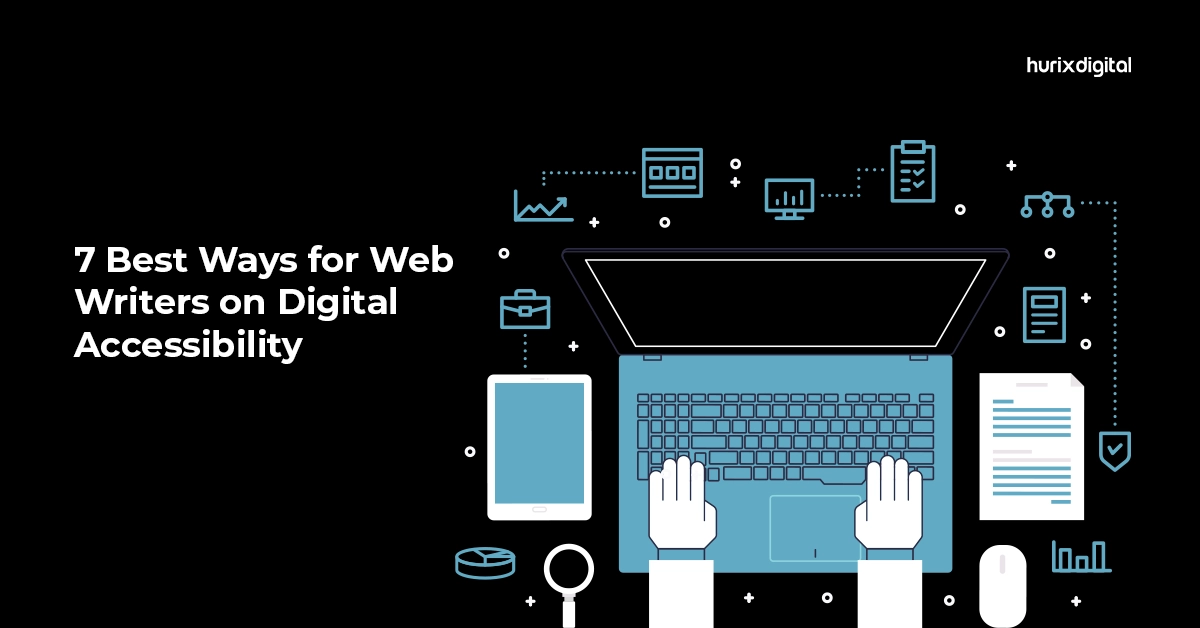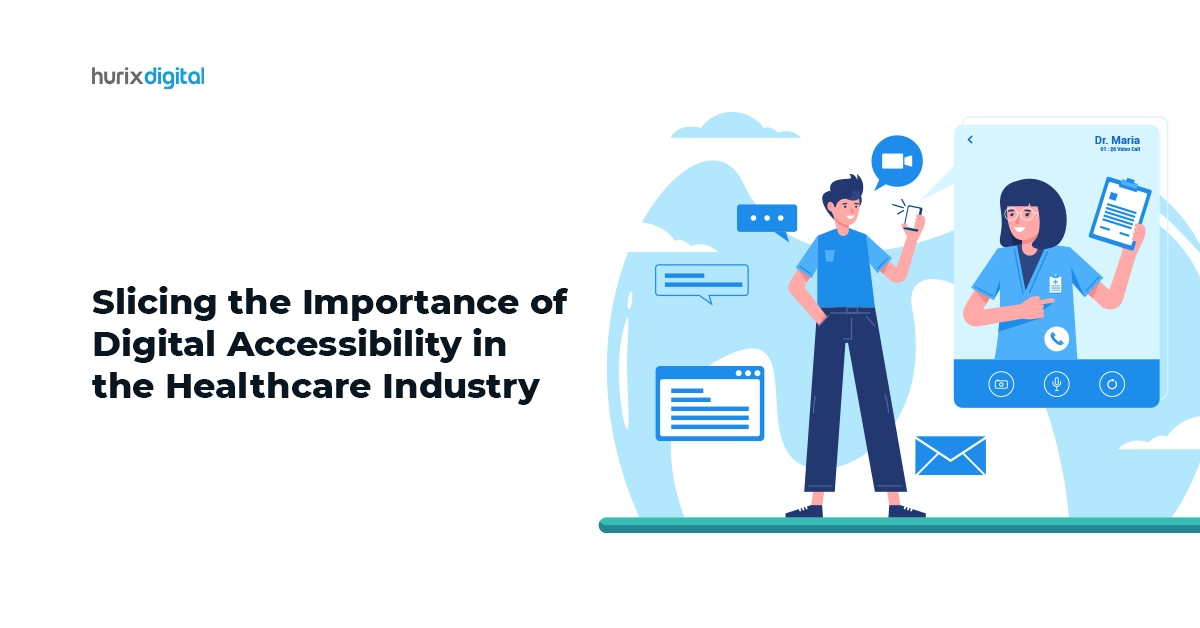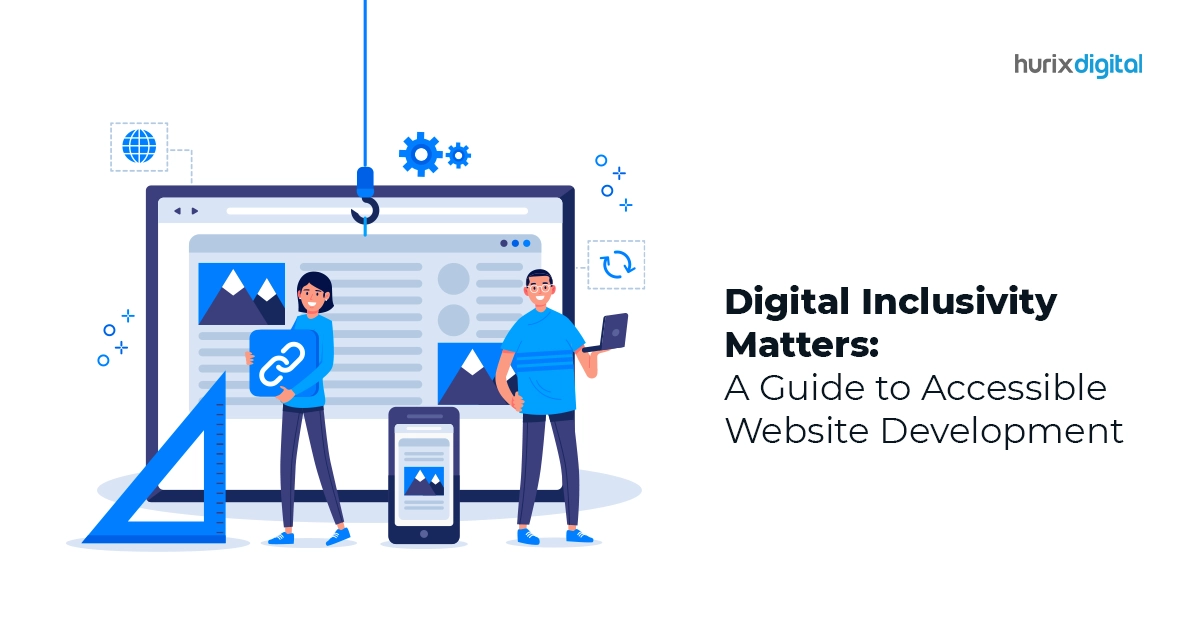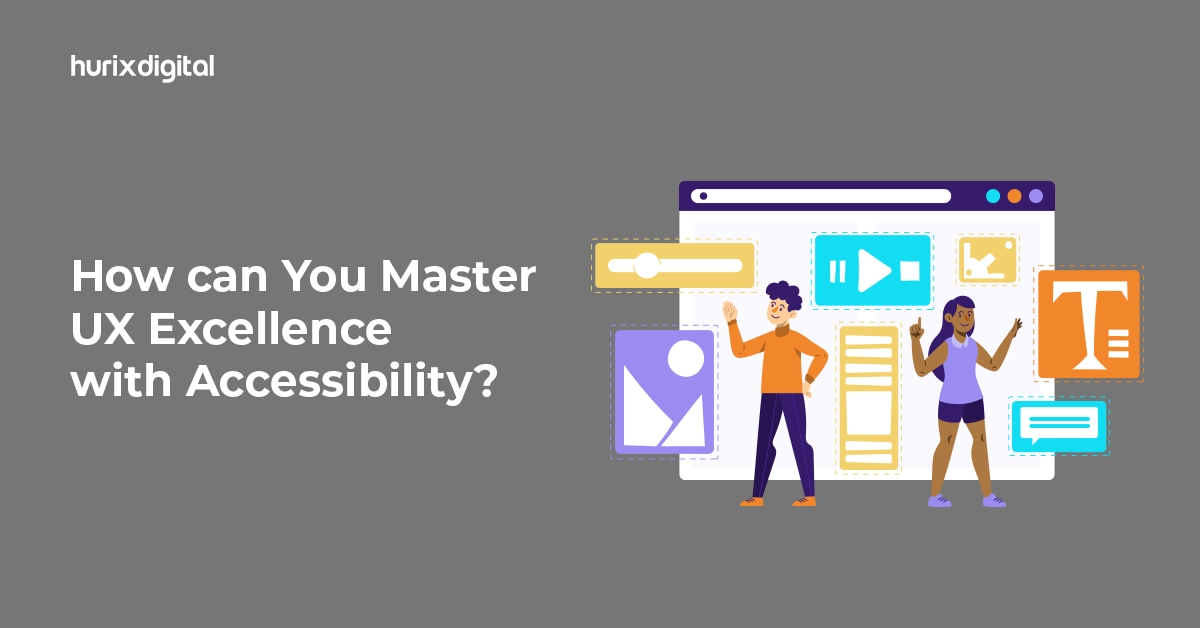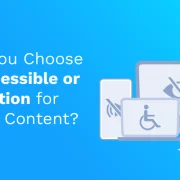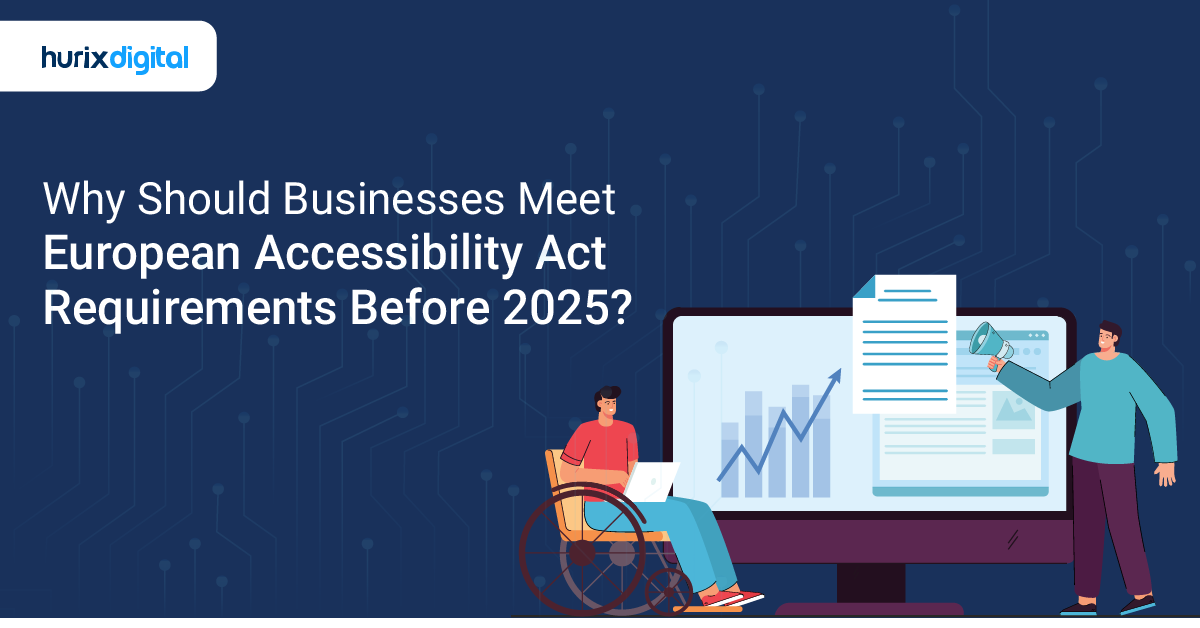
Why Should Businesses Meet European Accessibility Act Requirements Before 2025
Often, we overlook the privilege of effortlessly using our mobile devices and computers. However, according to the peer-reviewed journal The Lancet Regional Health Europe, the situation differs for 135 million individuals with disabilities in the European Union (EU). Accessing these products and services poses significant challenges due to the various barriers they encounter – a challenge that the upcoming European Accessibility Act 2025 aims to address by mandating improved accessibility across digital products and services.
Enter the European Accessibility Act (EAA), a groundbreaking initiative introduced by the European Commission to address the accessibility gap and the issue of marginalization faced by specially-abled individuals. The European Accessibility Act 2025 marks a radical change in how companies across the EU handle accessibility. Although the compliance date seems far off, waiting till the last minute to apply the necessary changes could cause significant difficulties and lost possibilities.
The European Accessibility Act, scheduled for implementation in June 2025, aims to prioritize digital product accessibility for businesses and organizations of all sizes. But what exactly do these European accessibility standards entail, and why is it paramount?
Furthermore, what are some common misconceptions surrounding EAA accessibility today? Most importantly, is your business adequately prepared for the upcoming changes?
Let’s explore this breakthrough law today.
Table of Contents:
- What is the European Accessibility Act (EAA)?
- Why is Accessibility Important?
- What will the European Accessibility Act 2025 Entail?
- Which Websites Should Comply with the European Accessibility Act 2025?
- Difference Between the European Accessibility Standards and Other Accessibility Guidelines
- Uses of the European Accessibility Act
- Top 5 Reasons to Implement European Accessibility Act Now
- European Accessibility Act Requirements for Companies
- 5 Steps to Comply with European Accessibility Standards
- Benefits of Complying with European Accessibility Standards
- The Bottom Line
What is the European Accessibility Act (EAA)?
The UN Convention on the Rights of Persons with Disabilities (UNCRPD) laid the EAA’s foundation. By harmonizing accessibility regulations within every member state, this directive seeks to improve how accessible goods and services are provided throughout the EU in an evolving way.
The European Accessibility Act (EAA) was first put forward in 2011 as an addition to the EU’s Web Accessibility Directive, which was adopted in 2016. A new EAA was implemented in April 2019.
It stated that member states must approve the required implementation legislation by June 28, 2022, and ensure that the EAA’s accessibility provisions are implemented by June 28, 2025. The documentation and monitoring process must be finished by June 28, 2030, and every five years after that.
Why is Accessibility Important?
According to the World Health Organization (WHO), an estimated 1.3 billion people (16% of the global population) live with a disability. These disabilities may include color blindness, limited mobility, and age-related impairments.
However, accessibility isn’t relevant only to people with disabilities. Situational challenges affect most of us, such as struggling to browse a smartphone in bright sunlight.
When discussing website accessibility compliance, we’re talking about ‘design for all,’ a concept that ensures software and websites are built without barriers, allowing everyone to access them, regardless of their abilities.
There are two compelling reasons why the accessibility of digital products matters: ethics and upcoming legislation.
Entertainment, learning and development, personal finances, job hunting, booking a doctor’s appointment… in today’s interconnected world, everything is digital. This is why it is crucial to make digital services accessible to avoid marginalizing individuals and creating a social divide.
This initiative recognizes the need for inclusivity and equal opportunities for all and bridges the accessibility gap.
Get your FREE Accessibility Audit report today!
What will the European Accessibility Act 2025 Entail?
One common misconception about accessibility is that it only involves font size and contrasting colors, whereas the most critical aspects lie within the code. Screen readers, essential for differently-abled individuals, read the code, not just the visual elements. Writing accessible code is a crucial skill for the future.
The EU’s accessibility law will follow the established WCAG standard, organizing guidelines under four principles: perceivable, operable, understandable, and robust. These guidelines will now apply to companies in the private sector, expanding beyond their current application in the public sector.
The EAA has a comprehensive scope, addressing both digital and physical aspects of accessibility. Let’s explore the key areas covered:
- Digital Accessibility: This means ensuring websites and digital platforms are accessible to everyone. These platforms are crucial channels for eCommerce, communication, and information dissemination. The focus is on adhering to the Web Content Accessibility Guidelines (WCAG), which guide the creation of accessible digital content.
- Assistive Technologies: The EAA recognizes the importance of assistive technologies and calls for compatibility with various devices and software, such as screen readers, magnifiers, and voice recognition tools.
- Electronic Communication: Modern communication heavily relies on telephony services like smartphones and mobile devices. The law wants to make these services accessible to individuals with disabilities.
- Audiovisual Media Accessibility: It also considers audiovisual media- guaranteeing that TV equipment and services offer features such as closed captions and audio descriptions to accommodate people with hearing and visual impairments.
- Banking Accessibility: The EAA strongly emphasizes financial inclusion, making accessible banking services a priority. The goal is for individuals with disabilities to manage their finances independently and with ease.
By implementing these measures, the EAA seeks to create a more inclusive society where all individuals can fully participate and access digital and physical services without barriers.
Which Websites Should Comply with the European Accessibility Act 2025?
The EU Accessibility Act impacts private businesses that provide services via government websites, even though its main goal is to ensure that all government websites adhere to the accessibility requirements.
The 15-page directive covers the public sector’s websites and mobile applications. The rules also apply to third-party suppliers (i.e., organizations funded by public agreements), municipalities, counties, and state administrations.
European accessibility standards centered around the Web Content Accessibility Guidelines (WCAG) 2.0 released by the World Wide Web Consortium (W3C) must be implemented and enforced by all EU member states.
The European Accessibility Act Compliance aims to standardize accessibility for TV gadgets, cell phones, tablets, eBook viewers, and several other devices and websites.
Difference Between the European Accessibility Standards and Other Accessibility Guidelines
The European Accessibility Act (EAA) differs in key ways from current accessibility standards like the Americans with Disabilities Act (ADA) and the Web Content Accessibility Guidelines (WCAG). First, the EAA is a thorough accessibility law that applies to various goods and services.
Second, unlike WCAG, the EAA has legal repercussions, requiring private businesses operating in the EU to follow EAA accessibility standards. Heavy penalties may follow noncompliance to adhere to EAA regulations. So, you must prioritize accessibility to avoid problems with the EAA!
In contrast to other policies, which may have varied legal channels such as voluntarily complying or commercial lawsuits, the EAA is administered by national authorities in every EU Member State.
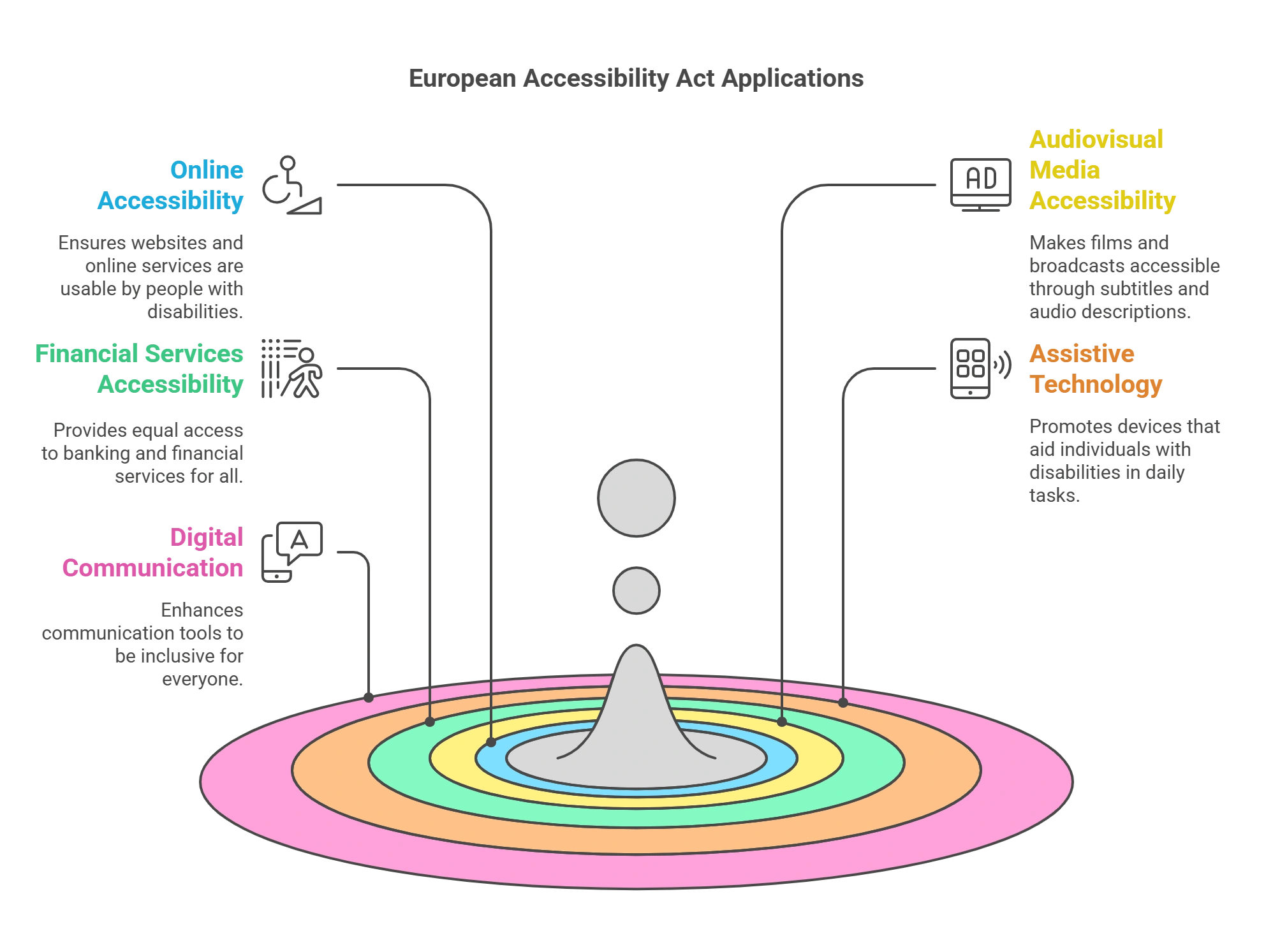
Uses of the European Accessibility Act
The European Accessibility Act 2025 seeks to promote a more varied market environment that invites individuals with one or more impairments across a wide range to fully engage in today’s world. Some of the use cases of this act are:
1. Online Accessibility
This will entail companies covered by the EAA ensuring websites and digital services are accessible and adhere to the WCAG’s (Web Content Accessibility Guidelines) fundamentals.
2. Audiovisual Media Accessibility
Businesses that manufacture broadcast devices or supply services associated with them must include accessibility features like closed captioning and subtitles in their products.
3. Financial Services Accessibility
2025 accessibility compliance benefits include simple, autonomous accounting procedures for people with disabilities. This implies that considerable accessibility modifications will also be needed for both online and offline financial services. For example, auditory aids are necessary for ATMs to facilitate easy use by the visually handicapped.
4. Assistive Technology
The EAA demands that digital goods and services, including voice recognition software, be more compatible with assistive technologies.
5. Digital Communication
People with disabilities must readily access and use the main forms of online communication. Email, messaging apps, cell phones, and other devices are included.
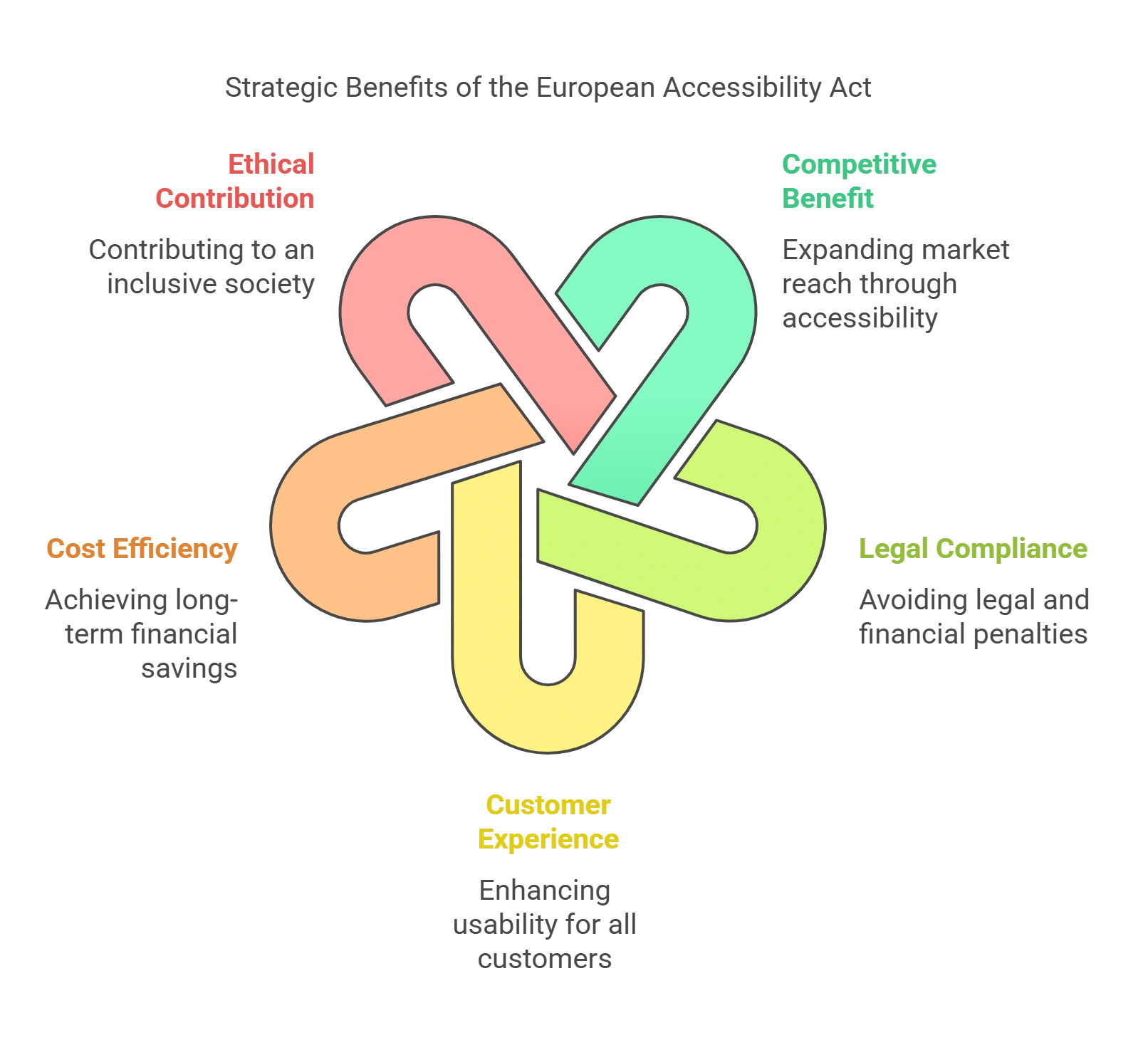
Top 5 Reasons to Implement European Accessibility Act Now
The following reasons show why it will be immensely beneficial to implement EAA compliance now instead of waiting:
1. Gaining a Competitive Benefit and Expanding Market Reach
Implementing the European Accessibility Act before the 2027 target offers a major competitive edge. The EAA mandates that all goods and services within the EU must prioritize accessibility.
Early adoption of these guidelines will help companies access a large market of over 135 million individuals with disabilities across Europe, as well as an aging population that progressively calls for easily available services.
Implementing the European Accessibility Act can improve brand reputation and help access a larger customer base. Businesses regarded as inclusive leaders are more likely to build customer loyalty and draw in fresh business that prioritizes accessibility.
This proactive strategy might help you establish a special market position by differentiating your company from rivals who could postpone compliance.
2. Avoiding Legal and Financial Penalties
Delaying adherence to the European Accessibility Act 2025 carries major financial and legal consequences. Apart from microenterprises with less than ten employees, the EAA is not only a rule but a mandate applicable to almost all companies operating within the EU. Ignoring the EAA could lead to fines, legal challenges, and a negative brand reputation.
Starting European Accessibility Act implementation now will allow companies to do extensive audits, pinpoint areas needing work, and start adjustments long before the 2025 target. From digital channels to tangible goods, this proactive strategy guarantees that every facet of your company is compliant and lowers the possibility of last-minute mistakes.
Other factors, such as financial consequences, also need to be considered. Early compliance allows one to use a phased approach, distributing expenses over time and avoiding rushed and expensive improvements.
3. Enhancing Customer Experience and Usability
The European Accessibility Act 2025 aims to improve usability for all users, not just those with disabilities. Accessible design always leads to better overall user experiences. For instance, features like easy navigation, accessible writing, and interoperability with many assistive devices can help everyone—not just those with specific needs.
Using the European Accessibility Act’s best practices, companies can improve their goods and services to increase consumer involvement and happiness. Ensuring websites are accessible via screen readers, for instance, benefits visually challenged visitors and enhances SEO, enabling everyone to locate your site more easily.
Including voice commands will help apps and devices be more user-friendly and appealing to a larger audience. Furthermore, easily accessible design can inspire ideas that would benefit every user.
For example, providing video materials with subtitles helps those with hearing difficulties and also increases the content’s accessibility for non-native speakers or noisy surroundings. These improvements provide a more favorable user experience, improve client retention, and increase conversion rates.
4. Achieving Long-Term Cost Efficiency
A common misconception is that implementing the European Accessibility Act will be unduly expensive. Although producing goods and services incurs upfront expenses, the long-term benefits significantly outweigh these initial costs. Early adoption of European Accessibility Act compliance benefits can result in significant long-term cost savings.
Early compliance has several financial benefits. It allows businesses to distribute expenses over multiple years. Starting early will help companies manage resources properly, preventing the need for costly last-minute overhauls.
Moreover, developing with accessibility in mind is usually more affordable than later retrofitting goods and services. This approach ensures accessibility is incorporated into the fundamental design process, thereby reducing the need for costly repairs.
5. Contributing to an Inclusive and Ethical Society
Adopting the European Accessibility Act enhances global inclusivity rather than only fulfilling a legal duty. The EAA aims to eliminate barriers for individuals with disabilities, enabling them to participate fully in society and access the same opportunities as everyone else.
Embracing the top reasons for early Accessibility Act implementation can help companies demonstrate a dedication to ethical business operations and corporate social responsibility. Customers, staff members, and partners who support equality and inclusion will find resonance in this strategy, which fits with general societal trends toward increased awareness and appreciation of diversity.
Companies prioritizing accessibility usually reap significant benefits from early European Accessibility Act compliance, with increased consumer loyalty and brand reputation. Accessible businesses are more likely to attract and retain consumers who respect moral behavior, which can lead to long-term corporate success and greater market share.
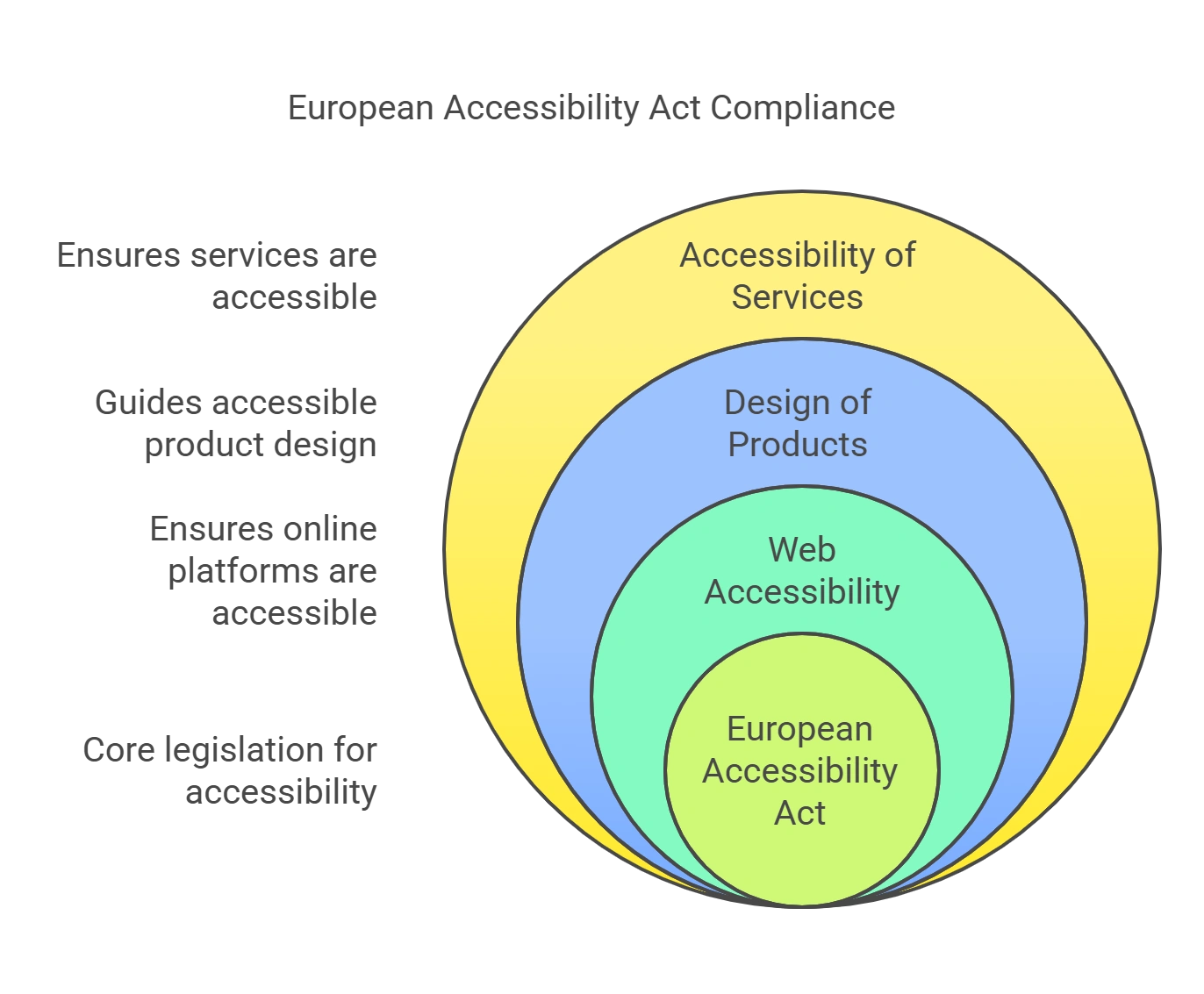
European Accessibility Act 2025 Requirements for Companies
Companies across various sectors need to follow mandatory requirements to experience the advantages of accessibility compliance. Here are a few EAA requirements:
1. Web Accessibility
If your company has an online presence, its website must adhere to the Web Content Accessibility Guidelines (WCAG). You must also ensure that everyone can access your online store.
E-commerce websites need to ensure that accessibility standards are followed throughout the user experience, from the technical architecture to the aesthetic overlay. Best practices for accessibility in these areas should be incorporated so that pages are mouse-free and usable.
2. Design of Products
Products like ATMs and iPhones need to be made with accessibility in mind. These devices contain functions for visually impaired individuals, such as audio-assisted purchases. For example, if your business produces ATMs, they must now support audio-assisted payments.
This can entail an audio jack and voiceover menu selections to enable visually impaired individuals to finish tasks on their own.
3. Accessibility of Services
The Act requires all services, including transit and Internet banking, to be accessible. This includes the applications and other online platforms through which these services are accessed.
For instance, if you provide internet banking solutions, your smartphone app should support spoken instructions and screen readers. Functions like reviewing account balances and routing payments should be completely accessible.
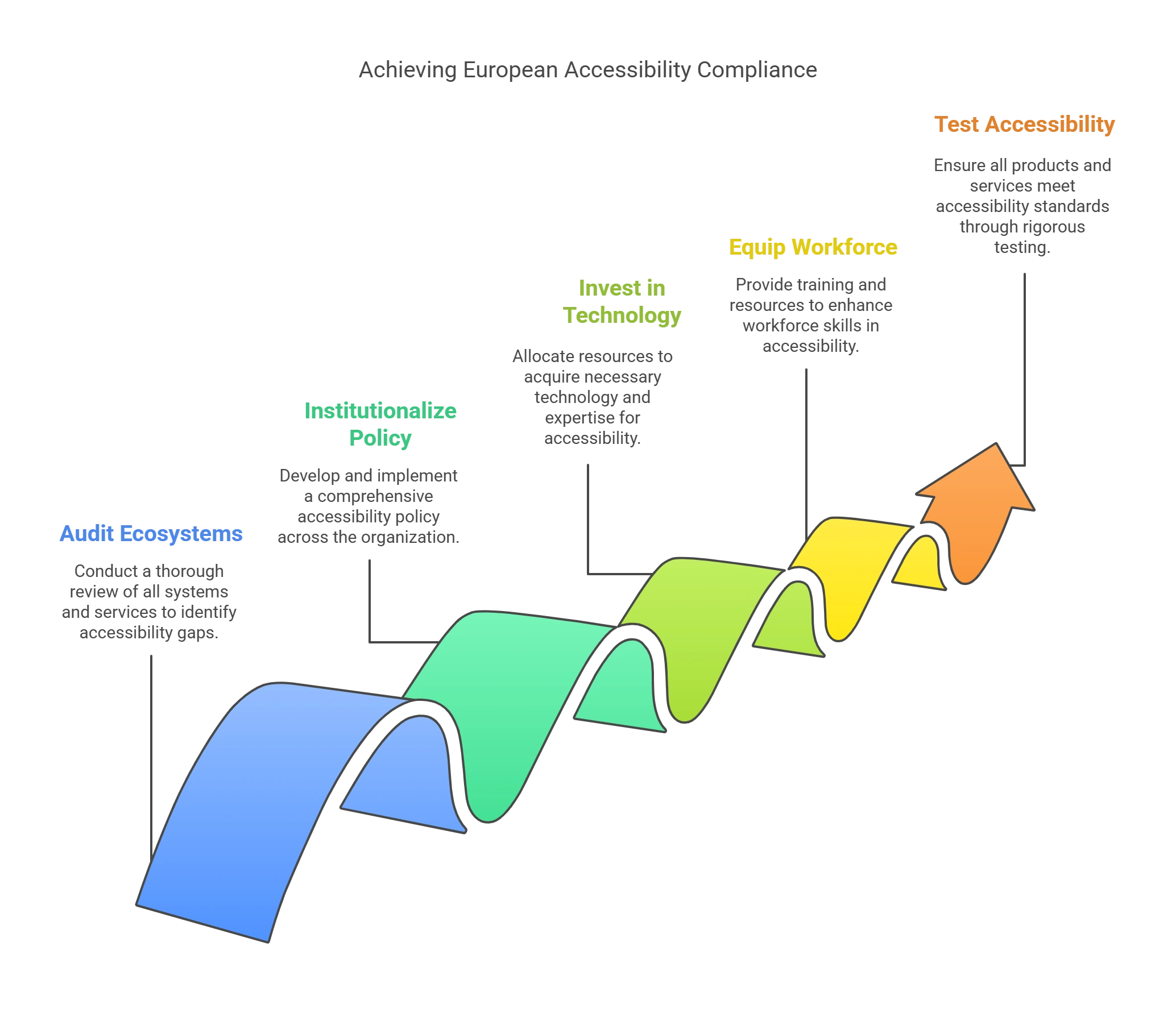
5 Steps to Comply with European Accessibility Standards
Here’s a comprehensive guide on accessibility compliance for business directors who want to transform their policies, build accessible ecosystems, and become inclusive brands.
Step 1: Audit all Ecosystems, Products & Services
The first of many steps to achieving accessibility compliance is for organizations to understand where they stand on the accessibility curve. They can start by conducting an internal audit to gauge the accessibility of their ecosystems, products, and services.
They can consider outsourcing this entire process to an accessibility expert so that it is thorough and objective.
Step 2: Institutionalize a Comprehensive Accessibility Policy
Organizations need to cement accessibility as a core value of their business. This is because not adhering to European accessibility standards can have serious consequences for the business due to the Act’s legal significance.
Businesses must frame a comprehensive accessibility policy that clearly outlines key goals to be achieved. The policy must include a concrete action plan for executing best practices for EAA compliance to help accomplish these milestones.
Organizations must then institutionalize the policy, making it accessible to all teams and future generations of the workforce.
Step 3: Make Early Investments in Technology & Expertise
Accessible services, products, and ecosystems are a specialized process. It requires an in-depth understanding of the challenges associated with disabilities and the barriers arising from inaccessible environments. Businesses may not have the capability to spearhead an effective transformation in-house.
This is where early investments in the right technology infrastructure and hiring accessibility experts can help businesses proceed with data-centricity, customer-centricity, efficiency, and effectiveness.
Step 4: Equip the Workforce with Knowledge and Skills
Ultimately, employees in the workforce need to build accessible products and ecosystems, design accessible services, and test and monitor the accessibility of their ecosystems on an ongoing basis.
However, most employees have no prior exposure to accessibility. Accessibility studies have not yet been included in the educational curriculum across most disciplines.
Hence, businesses may need to hire employees from scratch. Early investments in comprehensive training on disability and accessibility can be game-changers for companies, expediting accessibility transformation.
Step 5: Test Accessibility of All Products and Services
Businesses must make testing products and services for accessibility a part of their workflow and make adhering to EAA compliance checklists compulsory across all testing.
As technology and knowledge in the accessibility space continue to evolve, employees must stay aware of the latest advances and strive to raise the bar in European accessibility standards.
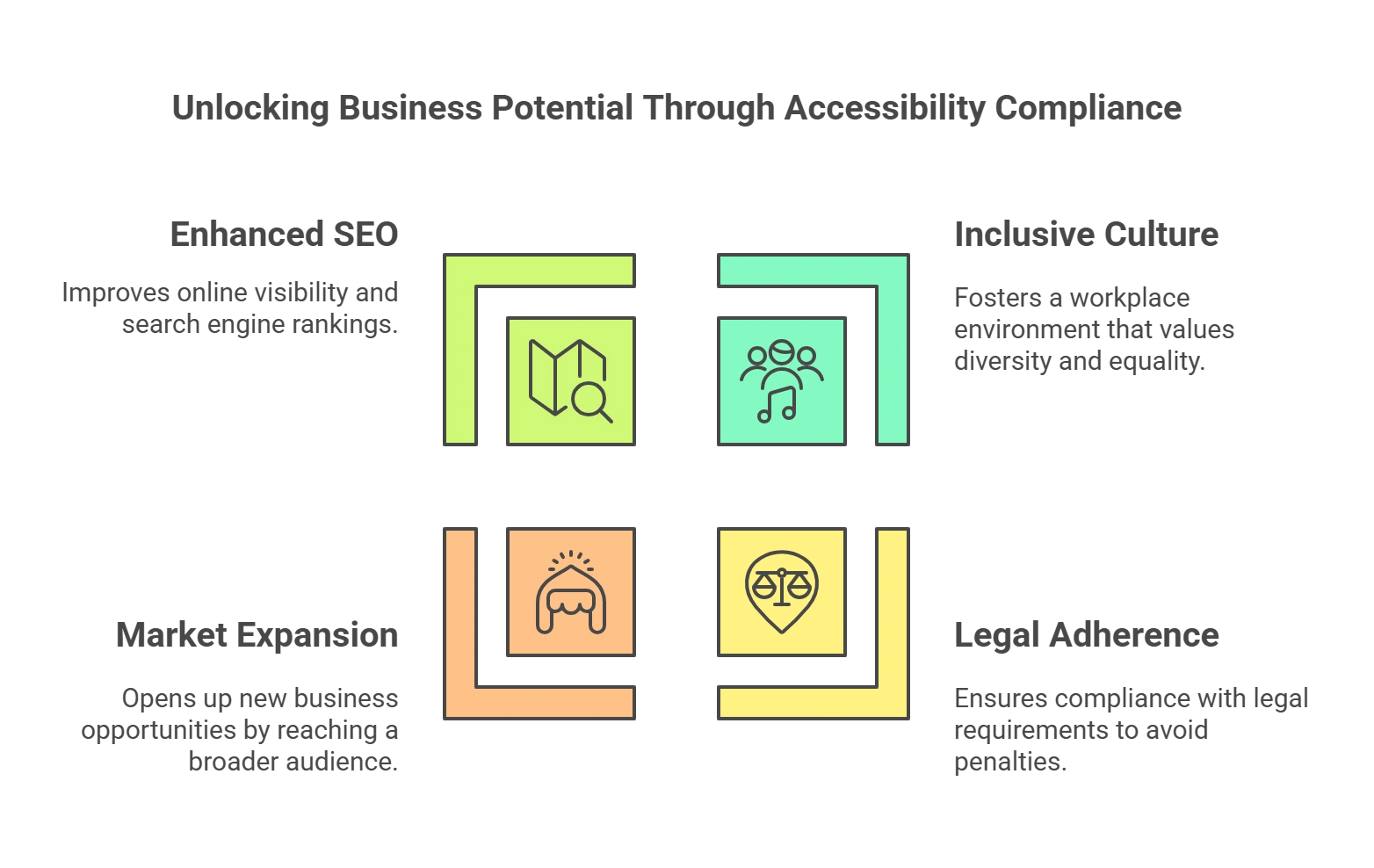
Benefits of Complying with European Accessibility Act 2025 Standards
Businesses can enjoy the following benefits by achieving accessibility standards in 2025:
1. Build an Inclusive Culture
Diversity and inclusion are major goals of businesses today. Building accessibility accessible products and services can contribute towards the shift to nurturing inclusive cultures.
2. Adhere to the Law
European Accessibility Act compliance is not an option; it is the law. Companies that do not comply can be fined heavily, prosecuted, and shut down.
3. Capture a Greater Market Share
By opening up products and services to people with disabilities, businesses can also grow their customer base. This is an investment in reaching more audiences and driving revenues.
4. Boost Search Engine Optimization (SEO)
Following web accessibility guidelines can help businesses improve their SEO results, boosting the discoverability of their products and services.
The Bottom Line
The European Accessibility Act 2025 represents a significant step toward building inclusivity and bridging accessibility gaps among individuals. By following guidelines, educating people, and encouraging innovation, the new law guarantees that no individual is left behind, irrespective of their condition.
With so many requirements to meet, the European Accessibility Act 2025 deadline could appear far off, but we strongly advise getting started as soon as feasible.
Moving quickly not only gives companies time to fulfill regulatory requirements but also enables the progressive adoption of required modifications, the distribution of associated expenses, and the avoidance of interruptions.
Partner with Hurix Digital to elevate your accessibility solutions and make your business regulatory-compliant. From designing an accessible website that complies with the prevalent web accessibility guidelines to conducting seamless accessibility audits, we provide end-to-end solutions for enhanced UX.

Vice President – Digital Content Transformation. He is PMP, CSM, and CPACC certified and has 20+ years of experience in Project Management, Delivery Management, and managing the Offshore Development Centre (ODC).
